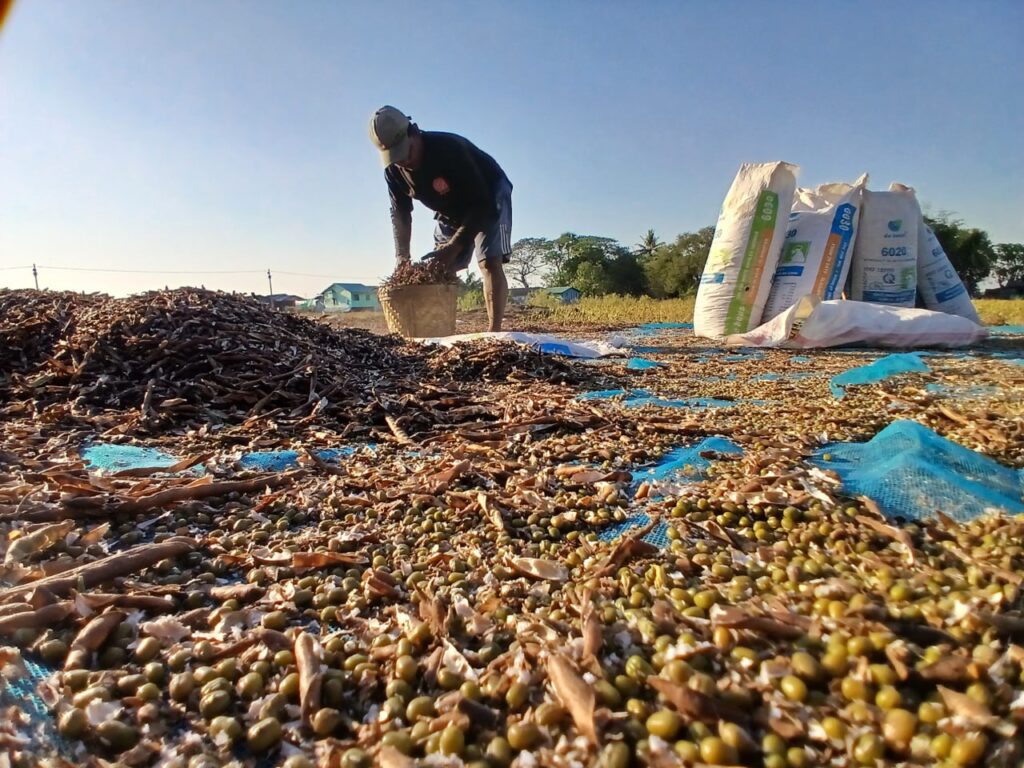Myanmar Spring Chronicle – October 7: Scene
MoeMaKa, October 8, 2025
Kyat Appreciation Amid Soaring Prices: The Public’s Struggle to Survive
In the past two to three weeks, the Myanmar kyat has appreciated noticeably. For several months, the exchange rate had fluctuated slightly around 4,400 kyat per U.S. dollar, but by the end of September the kyat strengthened, falling below 4,000 kyat per dollar in the first week of October.
Ordinarily, when a country’s currency appreciates, the price of imported goods should decline. But this logic applies only under normal economic conditions without trade restrictions or blockades. The current situation in Myanmar is far from normal.
Despite the stronger kyat, the prices of goods have continued to rise sharply. This suggests that the appreciation does not reflect genuine confidence or stability in the kyat. Rather, it results from restrictions and blockades that have reduced demand for the currency and limited trade.
In August, the junta abruptly shut down the Thai–Myanmar border trade route on the Myanmar side, seizing Thai cargo trucks that had already crossed into Karen State. This caused near suspension of trade through the Myawaddy–Mae Sot crossing. The junta then instructed importers to reroute shipments via the Kawthoung–Ranong maritime corridor, which quickly drove up the prices of goods imported from Thailand.
Everyday household items such as detergent, shampoo, dairy products, and toothpaste — as well as industrial raw materials and construction supplies — have become scarce and expensive. In Yangon’s retail outlets such as City Mart and Marketplace, which serve middle-class consumers, shortages and stockouts are becoming frequent. Some stores have even stopped selling certain products altogether. Although City Mart has long maintained import permits for food and consumer goods, it now appears unable to circumvent the junta’s import restrictions and blockades.
The rising kyat also hurts exporters and manufacturers who rely on overseas buyers, such as rice mills, bean exporters, and grain traders. Meanwhile, the distorted exchange rate environment prevents importers from actually buying goods at lower prices abroad, despite the nominally stronger kyat.
Healthcare consumers are also suffering. Medicine import licenses remain restricted, driving up the prices of pharmaceuticals. Ordinary people now face unaffordable costs or complete unavailability of essential drugs amid widespread inflation.
If city dwellers in Yangon and Mandalay are already struggling, conditions are even worse in conflict-affected areas. In many regions where the transport of certain goods is banned or restricted, people must pay much higher prices for basic necessities. The junta also blocks deliveries of medicines, electrical equipment, and fertilizers to several war-torn areas.
The worst-hit region is Rakhine State, where only three towns remain under junta control. The entire state is subject to strict trade restrictions. In junta-held towns like Sittwe, Kyaukphyu, and Manaung, limited goods are distributed under quotas. Most other areas under Arakan Army (AA) control rely on locally produced rice and staples or imports of rice, oil, and other essentials via the Indian border.
In Kachin, Chin, and Karenni (Kayah) States, as well as Sagaing Region, residents depend on goods transported from Yangon and Mandalay — but at inflated prices. Transport routes are insecure, subject to multiple armed groups’ tolls and checkpoints, poor road conditions, and frequent delays or losses. Combined, these factors drive prices far beyond normal levels in these areas.
Across Myanmar, trade has become entangled in a web of taxes, checkpoints, and security fees. Under these extraordinary pressures, people are facing unprecedented costs and hardships — struggling to survive in an economy where every basic necessity has turned into a luxury.

